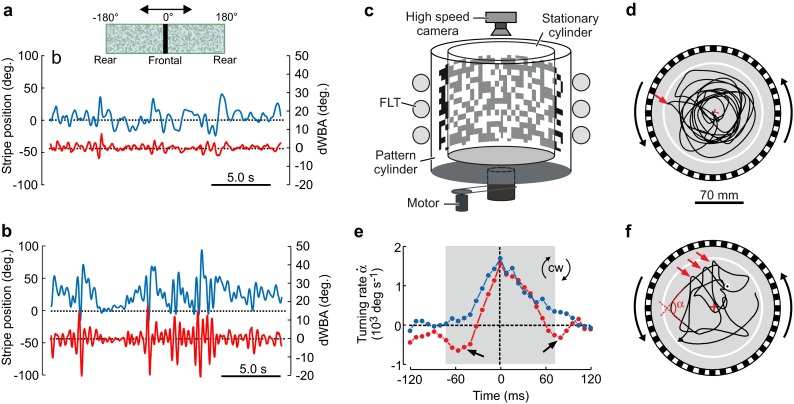Fig. 3.

Flight dynamics in tethered and freely flying non-flight-experienced (naïve) and flight-experienced fruit flies (control). a Figure shows relative changes in the difference between left and right wing stroke amplitude (red, right scale) of a flight-experienced fruit fly (control) and the azimuth position (blue, left scale) of a 30° wide, black, vertical stripe (pictogram) displayed in front of a random-dot background pattern inside a virtual-reality flight simulator (Hesselberg and Lehmann 2007). The animal controls angular velocity and thus position of the stripe by actively changing left and right stroke amplitude. b Time traces similar to a but derived for a naïve Drosophila. Sequences show the flies’ behaviors 100–120 s after flight initiation. c Free-flight arena. Single fruit flies emerge in the middle of the arena on an elevated platform and voluntarily initiate flight. A high-speed video camera is triggered when the animal takes off. The motor rotates the random-dot visual environment and three circular fluorescent light tubes (FLT) illuminate the visual pattern from behind. d, f Typical flight paths (7.9 s flight time) of a control in d and a naïve fly in f, during clockwise rotation of the visual panorama (angular velocity = 500° s−1). e Yaw turning rate during clockwise free flight saccades (red arrows in d, f) in naïve (blue, N = 13 flies) and control (red, N = 16 flies) fruit flies.
Figures are adopted from a previous study (Hesselberg and Lehmann 2009)
